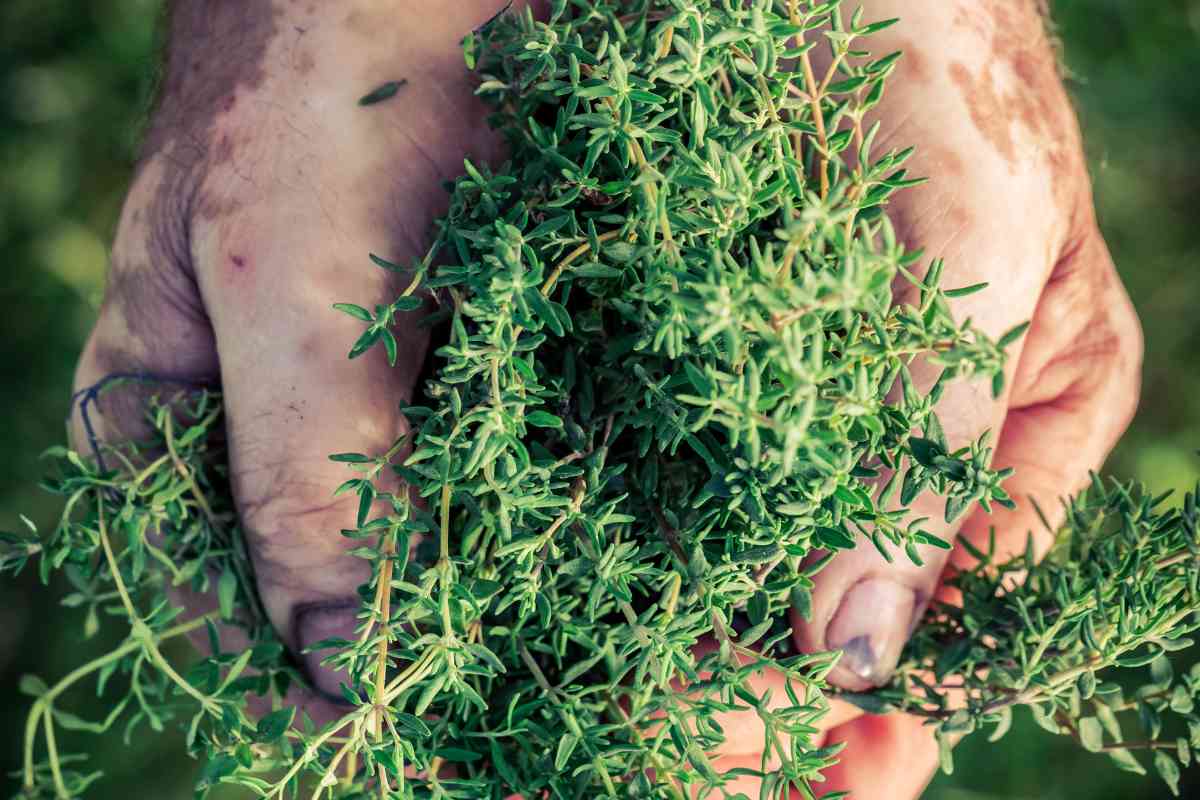Rosemary & Thyme: Growing, Harvesting, And Preserving Your Herbs

Table of Contents
Growing Rosemary & Thyme
Successfully growing rosemary and thyme hinges on understanding their basic needs. These sun-loving herbs thrive in specific conditions, making it crucial to choose the right location and provide appropriate care.
Choosing the Right Location and Soil
Both rosemary and thyme crave abundant sunlight. A location that receives at least six to eight hours of direct sunlight daily is ideal. Well-drained soil is paramount; these herbs are susceptible to root rot in soggy conditions. A slightly alkaline soil pH (between 6.0 and 7.5) is also preferred.
- Soil Amendments: Incorporating compost into your soil will improve drainage and provide essential nutrients.
- Poorly Draining Soil: If your soil tends to retain water, amend it with sand or gravel to improve drainage. Consider raised beds or containers for better control over soil conditions.
- Improving Soil Drainage: Before planting, test your soil's drainage by digging a hole and filling it with water. If the water sits for a long time, you'll need to improve drainage.
Planting Rosemary & Thyme
You can propagate rosemary and thyme from seeds, cuttings, or by planting established plants.
- From Seeds: Sow seeds indoors six to eight weeks before the last expected frost. Gently press the seeds into the soil surface and keep them moist until germination.
- From Cuttings: Take 4-6 inch cuttings from healthy stems in late spring or early summer. Dip the cut ends in rooting hormone and plant them in moist potting mix.
- From Established Plants: Planting established plants is the easiest method. Ensure the root ball is moist before planting.
Regardless of your chosen method, plant rosemary and thyme with adequate spacing (approximately 12-18 inches apart) to prevent overcrowding and allow for proper air circulation. Plant depth should be similar to the depth of the root ball or seed container.
Ongoing Care for Rosemary & Thyme
While relatively low-maintenance, rosemary and thyme benefit from consistent care.
- Watering: Water deeply but infrequently, allowing the soil to dry out slightly between waterings. Avoid overwatering, which can lead to root rot. Adjust watering frequency based on your climate and weather conditions.
- Fertilization: A light feeding with a balanced fertilizer in spring is often sufficient. Over-fertilizing can result in leggy growth and reduced flavor. Compost tea is an excellent organic option.
- Pest and Disease Control: Rosemary and thyme are generally pest-resistant, but watch out for aphids, spider mites, and whiteflies. Neem oil is an effective organic pest control solution.
Harvesting Rosemary & Thyme
Knowing when and how to harvest your rosemary and thyme is essential for maximizing flavor and ensuring healthy plant growth.
Knowing When to Harvest
The ideal time for harvesting depends on your desired outcome.
- Tender Leaves: For tender leaves with a milder flavor, harvest before the plant flowers.
- Stronger Flavor: For a stronger, more intense flavor, harvest after flowering.
- Harvest Readiness: Look for mature, healthy stems with abundant leaves. Avoid harvesting during periods of extreme heat or drought. The best time of day to harvest is typically in the morning after the dew has dried.
Harvesting Techniques
Several methods can be used for harvesting rosemary and thyme:
- Cutting Stems: Use sharp pruning shears to cut stems back to about one-third of their length. This encourages bushier growth.
- Pruning: Regularly prune your plants to maintain their shape and encourage new growth.
- Pinching Back: Pinch back the tips of stems to promote branching and bushier growth. This is a gentler harvesting technique suitable for smaller plants.
Preserving Rosemary & Thyme
Preserving your harvest allows you to enjoy the flavor of your herbs throughout the year.
Drying Rosemary & Thyme
Drying is a simple method for preserving rosemary and thyme.
- Air Drying: Bundle stems together and hang them upside down in a cool, dark, and well-ventilated area for 2-3 weeks, or until the leaves are brittle.
- Oven Drying: Spread herbs thinly on a baking sheet and dry in a low oven (170°F or 77°C) for 1-2 hours, or until brittle.
- Storage: Once dried, store your herbs in airtight containers in a cool, dark, and dry place.
Freezing Rosemary & Thyme
Freezing preserves the herbs' color and some flavor.
- Blanching (Optional): Briefly blanch the herbs in boiling water for 30 seconds before freezing for better color retention.
- Packaging: Pack the herbs into freezer bags or airtight containers.
- Shelf Life: Frozen herbs will last for 6-12 months.
Infusing Rosemary & Thyme (Oil & Vinegar)
Infused oils and vinegars add a delightful flavor to your cooking.
- Herb-Infused Oil: Combine fresh herbs with a high-quality oil (olive oil is ideal) and let it infuse for several weeks in a cool, dark place. Sterilize the container before use.
- Herb-Infused Vinegar: Similarly, steep fresh herbs in vinegar for several weeks. Sterilize the container before use.
- Storage: Store infused oils and vinegars in sterilized bottles in a cool, dark place.
Conclusion
Growing, harvesting, and preserving your own rosemary and thyme is a rewarding experience that brings the freshness and flavor of homegrown herbs to your kitchen. By following these steps, you can enjoy the aromatic benefits of these versatile herbs year-round. Start growing your own rosemary and thyme today! Experience the freshness and flavor of homegrown rosemary and thyme! Learn more about cultivating your own fragrant rosemary and thyme herbs by exploring resources on seed suppliers and gardening guides.

Featured Posts
-
 Nyt Mini Crossword Puzzle Solutions Wednesday April 9th
May 31, 2025
Nyt Mini Crossword Puzzle Solutions Wednesday April 9th
May 31, 2025 -
 Brascada Receta Autentica Del Bocadillo Valenciano
May 31, 2025
Brascada Receta Autentica Del Bocadillo Valenciano
May 31, 2025 -
 Suchaktion Bodensee Vermisste Person In Bregenz Vermisst
May 31, 2025
Suchaktion Bodensee Vermisste Person In Bregenz Vermisst
May 31, 2025 -
 Cleveland Fire Station Temporarily Closed Following Water Damage
May 31, 2025
Cleveland Fire Station Temporarily Closed Following Water Damage
May 31, 2025 -
 The Good Life What It Means And How To Get There
May 31, 2025
The Good Life What It Means And How To Get There
May 31, 2025
